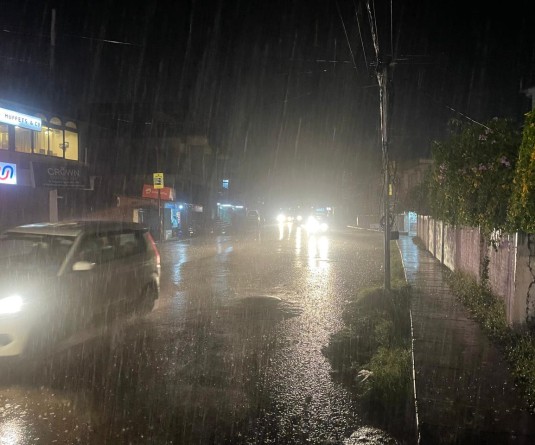
Morung Express News
Kohima | April 9
Easterine Kire and Kethoser Aniu Kevichusa were awarded the Gordon Graham Prize for Naga Literature today at a function held in Hotel Vivor here.
Speaking on behalf of the judges, Dr. Aküm Longchari said the shortlisted fiction and non-fiction books the jury members were given to judge represented a spectrum of issues with very different styles of writing and expression. Despite its diversity, he said the common thread running along all these books was their sense of attachment and belongingness to the Naga heart.
He informed that the Mission Statement-“the knowledge-keepers and idea-givers of Naga society” served as their principal guide and primary point of reference in the decision-making process while keeping in mind the questions of content, knowledge and research of subject matter, engagement with issues, originality and authenticity, clarity and flow, language sensitivity, contextualization and the book’s overall impression and relevance apart from being mindful of the plot and character development for the fiction category.
Stating that the Gordon Graham Prize for Naga Literature is a timely intervention and is creating the space and opportunity for new dreams and stories to be shared and for the new to be born, he said “it is encouraging Nagas to write our own stories from our own perspectives and for our own purposes. This is essential for Nagas to nurture ourselves, to uplift new leaders with new visions and to harness a new consciousness with an imagination to create anew.”
The fate of the Naga future, he said, cannot be left to politicians and political leaders (both over-ground and under-ground), bureaucrats and tribe leaders, but “it requires all of us. And definitely requires the “knowledge-keepers and idea-givers” to contribute towards critical thinking, harnessing creativity, fostering effective communication and developing collaboration for a shared humanity.” The other two judges were Professor Udayon Misra, former head of Department of English in Dibrugarh University and Dr. Kevileno Sakhrie, former head of Department of English, Kohima College, Kohima.
Chief Minister of Nagaland, Neiphiu Rio commended the Kohima Educational Society for instituting the award in memory of Gordon Graham in the 75th Battle of Kohima which was the defining moment of Second World War as the Allied Forces and Gordon Graham fought the most fierce and intense battles of the Second World War. He said Gordon Graham fought at the Battle of Kohima as a young captain of the Queen's own Cameron Highlanders in the British 2nd Division under General Grover and won two Military Crosses in the Burma Campaign for his act of bravery.
Highlighting his career as a journalist, a humanist that further led to the formation of the Kohima Educational Trust and its many noble initiatives, the Chief Minister said the literature award will help promote good writing, recognizing and rewarding the knowledge-keepers and idea givers if the Naga society. Pointing out that these awards will also encourage reading and writing within the Naga community, he said that there are many successful people who regard reading and books as key to their success.
Sylvia May, CEO, Kohima Educational Trust (KET), UK: Recalling the day she sat with her father in the KET Office discussing his idea of developing an award for Naga authors, Sylvia May said the idea was to encourage budding writers to write and to build confidence in the written word, and to recognize and reward the knowledge-keepers and idea givers of Naga society. Gordon Graham, she said was a writer his entire life, and for whom, the written word was everything.
Stating that she doesn’t think Gordon ever thought about legacy, she however said, the Kohima Educational Trust was his idea, and the one to which he was most committed and whilst he never spoke much about the war during his life, thoughts of the Nagas had stayed with him for all that time. He came to Kohima once in 1944 to fight the war, then ten years later when he returned and was shown around the Naga village by a small boy, inspiring an article called ‘The Trees are All Young on Garrison Hill’, which was when the idea first originated in his mind, the idea of creating something which would express gratitude to the people of Nagaland who had sacrificed much during the battles between the British and the Japanese.



